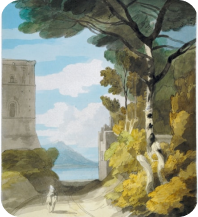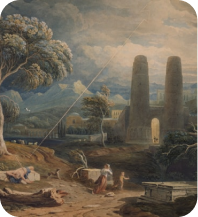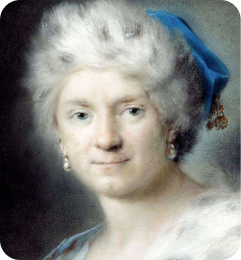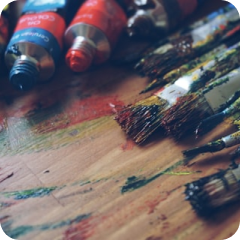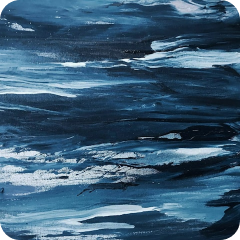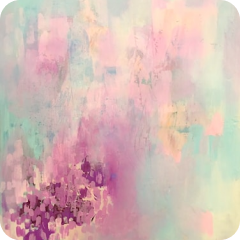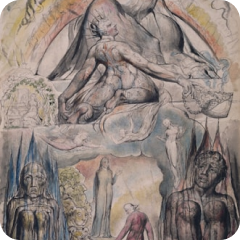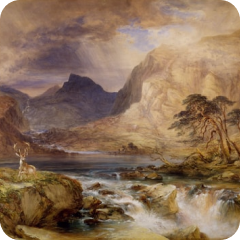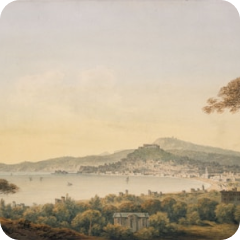Bring Your Walls to Life with Trumovo Canvas Prints
High-quality, customizable canvas art prints for any space

Create Your Custom Canvas in 4 Easy Steps

Step 1
Upload Your Image to the site

Step 2
Choose Size & Style

Step 3
Preview Your Design

Step 4
Place Your Order & Enjoy
;)
Top Categories
;)


Durable Prints
Long-lasting quality with vibrant colors.


Unique Designs
A variety of styles for every taste.


Personalized Art
Upload your image and create custom pieces.
On Sale Now
About Trumovo
Discover our exquisite collection of premium, tailor-made canvas art prints, designed to add a touch of elegance and personality to every room in your home. Whether you're looking to enhance your living room, bedroom, or office space, our art prints offer the perfect blend of style and sophistication, ensuring that each piece complements your unique taste and decor.
Hidden Gems
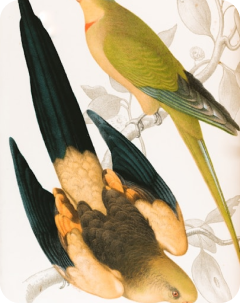
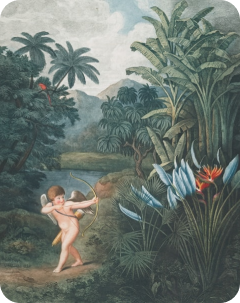

What Our Customers Say

“Lorem ipsum dolor sit amet consectetur. Nunc malesuada varius gravida lacus. Arcu fames vitae neque nulla hendrerit neque augue. Tortor ultricies lobortis consectetur commodo. Pretium eget lacus magna vel in eu amet sit.”

TechGuru88
Apex Solutions

“Lorem ipsum dolor sit amet consectetur. Nunc malesuada varius gravida lacus. Arcu fames vitae neque nulla hendrerit neque augue. Tortor ultricies lobortis consectetur commodo. Pretium eget lacus magna vel in eu amet sit.”

SunnyTraveler92
Luminous Innovations

“Lorem ipsum dolor sit amet consectetur. Nunc malesuada varius gravida lacus. Arcu fames vitae neque nulla hendrerit neque augue. Tortor ultricies lobortis consectetur commodo. Pretium eget lacus magna vel in eu amet sit.”

ArtisticSoul77
Nexus Dynamics

“Lorem ipsum dolor sit amet consectetur. Nunc malesuada varius gravida lacus. Arcu fames vitae neque nulla hendrerit neque augue. Tortor ultricies lobortis consectetur commodo. Pretium eget lacus magna vel in eu amet sit.”

SunnyTraveler92
Luminous Innovations
Best Custom Canvas Prints & Wall Art: Complete Guide to Professional Canvas Printing
Canvas reproduction represents a sophisticated transformation where digital imagery metamorphoses into tangible artistic expressions through specialized printing methodologies. This intricate process involves transferring photographic compositions, artistic renditions, or graphic elements onto premium canvas substrates, typically comprising cotton or polyester fibers, which subsequently undergo stretching and mounting procedures onto rigid framework structures.
The contemporary canvas reproduction industry has witnessed remarkable evolution, incorporating cutting-edge printing innovations that deliver unprecedented color fidelity and textural authenticity. Modern canvas printing encompasses various methodologies, from traditional inkjet approaches to revolutionary UV-curing systems, each offering distinct advantages for specific artistic applications.
Professional canvas reproduction facilities utilize sophisticated color management systems that ensure accurate color reproduction across different lighting conditions. These systems incorporate ICC color profiles, which standardize color representation throughout the entire production workflow. The meticulous attention to color accuracy distinguishes premium canvas prints from conventional photographic reproductions.
The substrate selection process significantly influences the final aesthetic outcome. Premium cotton canvas provides exceptional absorbency and natural texture variations that enhance the artistic appeal of reproduced imagery. Alternatively, polyester-based substrates offer superior dimensional stability and resistance to environmental fluctuations, making them ideal for commercial installations requiring longevity.
Canvas reproduction extends beyond mere image transfer, encompassing artistic interpretation and enhancement possibilities. Skilled technicians can modify contrast ratios, adjust color saturation levels, and implement specialized finishing treatments that elevate the visual impact of the final product. These enhancements transform ordinary photographs into gallery-worthy artistic statements.
Exceptional Advantages of Canvas Reproduction Solutions
The proliferation of canvas reproduction services reflects numerous compelling advantages that distinguish this medium from traditional photographic printing alternatives. Contemporary consumers increasingly recognize the superior aesthetic and practical benefits associated with canvas-based artistic reproductions.
Durability represents perhaps the most significant advantage of canvas reproduction solutions. Unlike conventional photographic papers that deteriorate rapidly under environmental stresses, premium canvas substrates demonstrate remarkable resilience against fading, moisture fluctuations, and mechanical damage. Scientific studies indicate that properly maintained canvas prints can retain their original color intensity for several decades when subjected to appropriate care protocols.
The dimensional characteristics of canvas reproductions create compelling visual depth that transforms flat imagery into immersive artistic experiences. The inherent texture of canvas substrates interacts with printed imagery to produce subtle shadowing effects and surface variations that simulate traditional painting techniques. This textural complexity adds sophistication and artistic credibility to reproduced imagery.
Versatility in presentation options represents another significant advantage of canvas reproduction methodologies. Unlike framed photographs that require specific mounting configurations, canvas prints accommodate diverse display preferences. Gallery wrap presentations eliminate the necessity for traditional framing, while museum wrap configurations provide seamless integration with existing interior design schemes.
The scalability of canvas reproduction enables unprecedented flexibility in sizing options. Professional reproduction facilities can accommodate dimensions ranging from intimate personal portraits to expansive commercial installations spanning multiple meters. This scalability ensures that artistic visions can be realized regardless of spatial constraints or installation requirements.
Canvas reproduction also offers exceptional value propositions for commercial applications. Businesses seeking distinctive branding elements or decorative installations benefit from the cost-effectiveness of canvas reproduction compared to original artwork acquisition. The ability to reproduce successful designs across multiple locations ensures brand consistency while maintaining budgetary considerations.
Comprehensive Preparation Strategies for Premium Canvas Reproduction
Successful canvas reproduction begins with meticulous preparation protocols that ensure optimal results throughout the entire production process. Understanding these preparatory steps enables creators to maximize the potential of their artistic visions while avoiding common pitfalls that compromise final quality.
Digital file optimization represents the foundational element of effective canvas reproduction preparation. High-resolution imagery serves as the cornerstone for exceptional print quality, with professional standards typically requiring minimum resolutions of 300 dots per inch at the intended output dimensions. This resolution threshold ensures adequate detail preservation during the printing process while preventing pixelation artifacts that diminish visual appeal.
Color space considerations play crucial roles in achieving accurate reproduction results. Professional workflows utilize Adobe RGB or ProPhoto RGB color spaces that encompass broader color gamuts compared to standard sRGB profiles. These expanded color spaces enable more accurate representation of vibrant hues and subtle tonal gradations that enhance the overall visual impact of canvas reproductions.
File format selection significantly influences the preservation of image quality throughout the reproduction workflow. Uncompressed formats such as TIFF or high-quality JPEG variants minimize data loss that can occur during file processing. Professional reproduction services often recommend specific file formats that optimize compatibility with their printing systems while maintaining maximum image fidelity.
Composition analysis ensures that artistic elements translate effectively to the canvas medium. Critical compositional elements should be positioned away from edge areas that will be affected by the wrapping process. Professional designers recommend maintaining safety margins of at least half an inch from critical content to prevent unwanted cropping or distortion during mounting procedures.
Proofing protocols provide essential quality assurance measures that prevent costly reproduction errors. Digital proofing systems enable preview capabilities that simulate the appearance of the final canvas print under various lighting conditions. These proofing systems account for substrate characteristics and printing methodology variations that influence color reproduction accuracy.
Professional Home-Based Canvas Reproduction Methodologies
Establishing a home-based canvas reproduction workflow requires careful consideration of equipment specifications, material procurement, and process optimization strategies. Contemporary printing innovations have democratized access to professional-quality canvas reproduction capabilities, enabling enthusiasts to achieve remarkable results within domestic environments.
Equipment selection forms the foundation of successful home-based canvas reproduction operations. Inkjet printers specifically designed for fine art reproduction offer the necessary precision and color accuracy required for professional results. These specialized printers accommodate various substrate thicknesses while maintaining consistent ink deposition across the entire printing surface.
Ink system considerations significantly impact both immediate print quality and long-term color stability. Pigment-based ink formulations demonstrate superior fade resistance compared to dye-based alternatives, making them essential for archival-quality canvas reproductions. Professional-grade ink sets often incorporate additional color channels that expand the achievable color gamut and improve tonal gradation accuracy.
Substrate compatibility ensures optimal interaction between printing equipment and canvas materials. Canvas sheets designed specifically for inkjet printing feature specialized coating formulations that enhance ink adhesion while preventing excessive absorption that can cause color bleeding or loss of detail. These optimized substrates deliver consistent results across various printing conditions.
Environmental control measures protect both printing equipment and canvas materials from contamination that can compromise reproduction quality. Maintaining stable temperature and humidity levels prevents dimensional changes in canvas substrates while ensuring consistent ink flow characteristics. Professional home studios often incorporate air filtration systems that eliminate dust particles that can interfere with printing operations.
Workflow organization streamlines the reproduction process while minimizing opportunities for errors or quality compromises. Establishing standardized procedures for file preparation, printer calibration, and quality assessment ensures consistent results across multiple printing sessions. Documentation of successful parameter combinations enables reproducible results for future projects.
Leveraging Print-on-Demand Services for Canvas Reproduction
Print-on-demand platforms have revolutionized the canvas reproduction industry by providing accessible, cost-effective solutions for creators seeking professional-quality results without substantial capital investments. These services combine sophisticated printing capabilities with streamlined ordering processes that accommodate both individual creators and commercial enterprises.
Platform selection criteria encompass various factors that influence both immediate satisfaction and long-term success. Reputable print-on-demand services demonstrate transparency in their printing specifications, substrate options, and quality control measures. Comprehensive portfolio reviews and customer testimonials provide valuable insights into service reliability and output quality consistency.
File submission protocols vary among different print-on-demand providers, requiring careful attention to specific technical requirements. Resolution standards, color profile preferences, and file format specifications must align with platform capabilities to ensure optimal reproduction results. Many services provide detailed submission guidelines that outline these requirements explicitly.
Quality assurance mechanisms implemented by professional print-on-demand services include automated file analysis systems that identify potential reproduction issues before production begins. These systems evaluate resolution adequacy, color space compatibility, and compositional elements that might be affected by canvas wrapping procedures. Early identification of potential issues prevents disappointing results and unnecessary remake expenses.
Global fulfillment networks enable print-on-demand services to offer rapid delivery while minimizing shipping costs and environmental impact. Strategic placement of production facilities near major population centers reduces transit times while supporting local economies. This distributed approach also provides redundancy that ensures order fulfillment continuity during peak demand periods.
Customization capabilities extend beyond basic image reproduction to include sophisticated design manipulation tools that enhance creative possibilities. Professional platforms often provide template systems, text overlay capabilities, and multi-image composition tools that expand artistic options without requiring advanced design software proficiency.
Post-Production Enhancement and Preservation Strategies
The completion of the printing process marks the beginning of crucial post-production phases that determine the longevity and visual impact of canvas reproductions. Professional finishing techniques and preservation protocols ensure that investments in canvas reproduction deliver maximum value and aesthetic satisfaction over extended periods.
Stretching methodologies significantly influence both the structural integrity and visual presentation of canvas reproductions. Gallery wrapping techniques extend the printed image around the edges of the stretcher frame, creating seamless presentations that eliminate the need for traditional framing solutions. This approach maximizes the visual impact of the artwork while providing contemporary aesthetic appeal.
Museum wrapping alternatives maintain image integrity by utilizing neutral-colored edges that complement the primary composition without introducing visual distractions. This methodology proves particularly effective for images containing critical elements near the border areas that might be compromised by gallery wrapping procedures. Professional framers often recommend museum wrapping for historically significant reproductions or commercial installations requiring formal presentation aesthetics.
Mounting tension optimization ensures dimensional stability while preventing distortion that can compromise image quality. Excessive tension can cause canvas deformation or stretcher bar impression, while insufficient tension results in sagging that detracts from professional appearance. Experienced technicians utilize graduated tensioning procedures that achieve optimal flatness without inducing structural stress.
Environmental protection measures safeguard canvas reproductions against deterioration caused by atmospheric pollutants, moisture fluctuations, and ultraviolet radiation exposure. UV-filtering glazing systems provide transparent protection that maintains visual accessibility while blocking harmful radiation wavelengths. These protective measures significantly extend the useful lifespan of canvas reproductions in challenging display environments.
Maintenance protocols ensure continued visual excellence throughout the operational lifespan of canvas reproductions. Regular inspection procedures identify early signs of deterioration that can be addressed through targeted intervention strategies. Professional cleaning techniques remove accumulated contaminants without compromising the integrity of printed imagery or substrate materials.
Material Science and Substrate Selection Considerations
The foundation of exceptional canvas reproduction lies in understanding the complex relationships between substrate characteristics, printing methodologies, and environmental factors. Material science principles guide the selection of optimal canvas substrates that deliver superior performance across diverse application requirements.
Fiber composition analysis reveals significant performance differences between natural and synthetic canvas materials. Cotton fibers provide exceptional ink absorption characteristics that enhance color saturation and detail reproduction. The natural texture variations inherent in cotton substrates contribute to the authentic artistic appearance that distinguishes canvas reproductions from conventional photographic prints.
Polyester substrates offer superior dimensional stability and resistance to environmental fluctuations that can compromise the integrity of natural fiber alternatives. Advanced polyester formulations incorporate specialized surface treatments that optimize ink adhesion while maintaining the textural characteristics associated with traditional canvas materials. These synthetic alternatives prove particularly valuable for outdoor installations or environments with challenging atmospheric conditions.
Weave density specifications influence both the aesthetic characteristics and functional performance of canvas substrates. Finer weave patterns provide smoother surfaces that enhance detail reproduction in photographic imagery, while coarser weaves contribute to the artistic texture associated with traditional painting reproductions. Professional reproduction services often maintain inventories of various weave densities to accommodate specific project requirements.
Coating formulations applied to canvas substrates significantly impact ink interaction and color reproduction accuracy. Specialized primer systems optimize ink penetration while preventing excessive absorption that can cause color bleeding or loss of detail. These coating systems also enhance the archival properties of canvas reproductions by providing protective barriers against environmental contaminants.
Weight classifications provide standardized metrics for evaluating canvas substrate durability and suitability for specific applications. Heavier substrates demonstrate superior resistance to mechanical stress and environmental factors, making them ideal for large-format reproductions or high-traffic display locations. Lighter alternatives offer cost advantages for temporary installations or budget-conscious projects.
Color Management and Reproduction Accuracy Protocols
Achieving consistent color reproduction across different viewing conditions requires sophisticated color management protocols that account for the complex interactions between digital imagery, printing systems, and display environments. Professional canvas reproduction relies on standardized color management practices that ensure predictable and accurate results.
Color profile implementation serves as the foundation for accurate color reproduction workflows. ICC color profiles define the color characteristics of input devices, printing systems, and display environments, enabling accurate color translation throughout the reproduction process. Professional workflows incorporate multiple color profiles that account for specific substrate characteristics and viewing conditions.
Calibration procedures ensure that printing equipment maintains consistent color reproduction performance over time. Regular calibration protocols compensate for variations in ink composition, environmental conditions, and equipment aging that can affect color accuracy. Automated calibration systems utilize sophisticated colorimetric measurements to maintain optimal performance standards.
Gamut mapping strategies address the inevitable color space limitations encountered when reproducing digital imagery on physical substrates. Professional reproduction systems implement sophisticated algorithms that optimize color translation while preserving the artistic intent of original compositions. These mapping strategies prevent color distortion while maximizing the utilization of available color reproduction capabilities.
Proofing systems provide essential quality control measures that verify color accuracy before final production begins. Digital proofing technologies simulate the appearance of canvas reproductions under standardized viewing conditions, enabling accurate prediction of final results. Advanced proofing systems account for substrate characteristics and environmental factors that influence color perception.
Metamerism considerations address the phenomenon where colors appear different under varying illumination conditions. Professional canvas reproduction workflows incorporate multiple illumination standards during evaluation processes to ensure consistent color appearance across diverse viewing environments. This attention to metamerism ensures customer satisfaction regardless of display location characteristics.
Contemporary Printing Innovations and Emerging Technologies
The canvas reproduction industry continues to evolve through the integration of innovative printing technologies that enhance both production efficiency and output quality. Understanding these emerging technologies enables informed decision-making when selecting reproduction services or equipment for specific project requirements.
Digital printing innovations have transformed the canvas reproduction landscape through improved resolution capabilities and expanded color gamut reproduction. Contemporary printing systems incorporate microscopic droplet placement precision that enables photographic detail reproduction previously achievable only through traditional photographic processes. These improvements democratize access to gallery-quality reproduction capabilities.
UV-curable ink systems represent significant advances in durability and environmental sustainability for canvas reproduction applications. These specialized ink formulations undergo instantaneous curing when exposed to ultraviolet radiation, eliminating volatile organic compound emissions while providing superior adhesion characteristics. UV-cured prints demonstrate exceptional resistance to fading and mechanical damage.
Latex ink technologies offer environmentally responsible alternatives to traditional solvent-based printing systems while maintaining professional quality standards. Water-based latex formulations eliminate harmful emission concerns while providing excellent color reproduction and durability characteristics. These systems prove particularly valuable for indoor installations where air quality considerations are paramount.
Hybrid printing methodologies combine multiple printing technologies within single production workflows to optimize specific performance characteristics. These innovative approaches might incorporate digital printing for detailed imagery combined with screen printing techniques for specialized color effects or textural enhancements. Hybrid methodologies enable unprecedented creative possibilities for custom canvas reproductions.
Artificial intelligence integration streamlines various aspects of the canvas reproduction workflow, from automated color correction to intelligent scaling algorithms that preserve image quality during size modifications. Machine learning systems analyze image characteristics to recommend optimal printing parameters while identifying potential quality issues before production begins.
Commercial Applications and Market Opportunities
The expanding canvas reproduction market presents diverse commercial opportunities for entrepreneurs, artists, and established businesses seeking to capitalize on growing consumer demand for personalized artistic expressions. Understanding market dynamics and customer preferences enables strategic positioning within this competitive landscape.
Interior design integration represents a substantial market segment where canvas reproductions serve as focal points within residential and commercial spaces. Professional interior designers increasingly specify custom canvas reproductions that complement architectural elements while reflecting client personality and preferences. This trend creates opportunities for reproduction services that understand design principles and aesthetic considerations.
Corporate branding applications utilize canvas reproductions to create distinctive visual identities within office environments, retail spaces, and hospitality venues. Custom reproductions featuring company imagery, product photography, or brand-related artistic elements establish memorable impressions while reinforcing corporate messaging. These applications often require specialized mounting systems and environmental protection measures.
Event commemoration services cater to consumers seeking permanent reminders of significant life occasions through canvas reproduction. Wedding photography, graduation ceremonies, and milestone celebrations provide content for meaningful artistic reproductions that preserve memories in sophisticated presentation formats. This market segment values emotional resonance over purely aesthetic considerations.
Hospitality industry applications encompass hotels, restaurants, and entertainment venues that utilize canvas reproductions to establish atmospheric ambiance and visual interest. These installations often require specialized mounting systems that accommodate frequent relocation while maintaining professional appearance standards. Fire safety compliance and environmental durability become critical considerations for hospitality applications.
Art market accessibility through canvas reproduction enables broader audiences to experience renowned artistic works through high-quality reproductions. Museums and galleries utilize sophisticated reproduction technologies to create educational materials and retail merchandise that extends cultural appreciation beyond physical institution boundaries. These applications require exceptional color accuracy and detail preservation.
Specialized Printing Equipment and System Requirements
Professional canvas reproduction demands sophisticated printing equipment that accommodates the unique characteristics of canvas substrates while delivering consistent quality results. Understanding equipment specifications and operational requirements enables informed investment decisions for commercial operations or serious hobbyist applications.
Wide-format inkjet printers specifically designed for canvas reproduction incorporate specialized feeding mechanisms that accommodate the thickness and texture variations inherent in canvas materials. These systems feature adjustable printhead clearances and substrate tensioning mechanisms that prevent feeding irregularities or surface contact that could compromise print quality.
Ink delivery systems designed for canvas applications utilize specialized formulations that optimize penetration and adhesion characteristics. Professional printing systems often incorporate multiple ink reservoirs that enable sophisticated color mixing capabilities while maintaining consistent flow rates across extended production runs. Temperature-controlled ink circulation systems ensure optimal viscosity characteristics regardless of environmental conditions.
Print controller software provides the interface between digital imagery and physical reproduction processes. Professional controller systems incorporate sophisticated color management capabilities, substrate-specific printing profiles, and automated quality monitoring functions that ensure consistent results across diverse production requirements. These systems often include predictive maintenance features that minimize downtime and production interruptions.
Post-processing equipment encompasses various specialized tools required for professional finishing operations. Automated cutting systems ensure precise trimming while pneumatic stretching devices maintain consistent tension across large-format reproductions. Heat activation systems facilitate proper ink curing while controlled drying environments prevent contamination during the curing process.
Quality measurement instruments provide objective evaluation capabilities that verify reproduction accuracy and consistency. Spectrophotometric devices measure color accuracy while surface profilers evaluate texture uniformity and defect detection. These measurement systems enable continuous process improvement while maintaining professional quality standards.
Creative Design Principles for Canvas Reproduction Success
Effective canvas reproduction transcends technical proficiency to encompass artistic sensibility and design expertise that transforms ordinary imagery into compelling visual statements. Understanding design principles specific to canvas reproduction enables creators to maximize the aesthetic impact of their artistic visions.
Compositional considerations must account for the three-dimensional characteristics of canvas presentations that differ significantly from flat photographic displays. The wrapping process affects edge areas of compositions, requiring careful placement of critical visual elements away from border regions. Professional designers implement compositional strategies that anticipate these spatial transformations while maintaining visual balance and impact.
Scale relationships between subject matter and reproduction dimensions influence viewer engagement and emotional response. Oversized reproductions of intimate subjects create dramatic impact through unexpected scale relationships, while undersized reproductions of expansive landscapes may lose their intended emotional resonance. Understanding these scale dynamics enables strategic sizing decisions that enhance artistic effectiveness.
Color harmony principles guide the selection and modification of color palettes that optimize canvas reproduction potential. The textural characteristics of canvas substrates can enhance certain color relationships while diminishing others. Warm color palettes often benefit from canvas texture enhancement, while cool palettes may require careful contrast management to maintain visual impact.
Textural interplay between printed imagery and canvas substrate characteristics creates opportunities for sophisticated visual effects that distinguish canvas reproductions from alternative media. Understanding how different image textures interact with canvas weave patterns enables designers to select or modify imagery that maximizes these textural relationships.
Lighting consideration planning ensures that canvas reproductions perform effectively under diverse illumination conditions. The three-dimensional characteristics of canvas presentations create shadowing effects that vary with lighting angles and intensity. Professional installations often incorporate specialized lighting systems that enhance the textural appeal of canvas reproductions while providing adequate illumination for comfortable viewing.
Environmental Sustainability and Eco-Conscious Reproduction Practices
Contemporary canvas reproduction increasingly incorporates environmental sustainability principles that minimize ecological impact while maintaining professional quality standards. Understanding sustainable practices enables informed decision-making that aligns commercial objectives with environmental responsibility.
Substrate sourcing protocols emphasize renewable materials and responsible forestry practices that minimize environmental degradation. Organic cotton canvas substrates provide alternatives to conventional materials while supporting agricultural practices that protect soil health and biodiversity. Certification programs verify the environmental credentials of substrate suppliers while ensuring quality consistency.
Ink formulation innovations focus on reducing volatile organic compound emissions and eliminating hazardous substances from printing processes. Water-based ink systems provide environmentally responsible alternatives to solvent-based formulations while maintaining professional color reproduction capabilities. These eco-friendly formulations often demonstrate superior workplace safety characteristics alongside environmental benefits.
Waste reduction strategies minimize material consumption through optimized production planning and efficient substrate utilization. Professional reproduction facilities implement nesting algorithms that maximize substrate usage while automated cutting systems minimize trim waste. Recycling programs for production waste materials further reduce environmental impact while potentially offsetting operational costs.
Energy efficiency considerations encompass both printing equipment selection and facility operations optimization. Modern printing systems incorporate energy-saving features that reduce power consumption during standby periods while maintaining rapid response capabilities for production demands. Renewable energy integration provides additional environmental benefits for reproduction facilities committed to sustainability.
Local production networks reduce transportation-related environmental impact while supporting regional economies. Distributed printing networks enable reproduction services to fulfill orders from facilities closest to delivery destinations, minimizing shipping distances and associated carbon emissions. This approach also provides faster delivery times that enhance customer satisfaction.
Quality Control and Assurance Methodologies
Maintaining consistent quality standards throughout canvas reproduction operations requires comprehensive quality control protocols that address every aspect of the production workflow. Professional quality assurance systems implement multiple checkpoints that prevent defective products from reaching customers while identifying opportunities for process improvement.
Incoming material inspection procedures verify that canvas substrates and ink supplies meet specified quality standards before entering production workflows. These inspections encompass dimensional accuracy, surface uniformity, coating consistency, and contamination detection that could compromise reproduction quality. Rigorous material standards prevent quality issues that originate from substrate or consumable deficiencies.
Process monitoring systems continuously evaluate printing equipment performance throughout production runs to identify variations that might affect output quality. Automated monitoring systems track parameters such as ink flow rates, printhead positioning accuracy, and substrate feeding consistency. Real-time data collection enables immediate corrective actions that prevent quality deviations from affecting multiple reproductions.
Sample evaluation protocols provide systematic approaches for assessing reproduction quality against established standards. Professional evaluation procedures utilize standardized lighting conditions, color measurement instruments, and trained personnel who can identify subtle quality variations that might escape automated detection systems. These evaluations often incorporate customer feedback mechanisms that provide market validation of quality standards.
Statistical process control methodologies track quality metrics over time to identify trends that might indicate equipment degradation or process drift. Control charts and statistical analysis tools enable proactive maintenance scheduling while optimizing process parameters for consistent quality delivery. These systems provide objective evidence of quality performance that supports customer confidence and business credibility.
Corrective action procedures address quality deviations through systematic root cause analysis and implemented solutions that prevent recurrence. Professional quality systems document all quality incidents while tracking the effectiveness of corrective measures over time. This approach enables continuous improvement while building organizational knowledge that enhances future performance.
Market Analysis and Consumer Preference Trends
The canvas reproduction market demonstrates dynamic growth patterns driven by evolving consumer preferences, technological advances, and expanding application opportunities. Understanding market trends enables strategic positioning and product development decisions that capitalize on emerging opportunities while anticipating future demand patterns.
Demographic analysis reveals distinct preference patterns among different consumer segments that influence purchasing decisions and aesthetic choices. Younger consumers often prefer contemporary design aesthetics with bold color palettes and unconventional sizing options, while mature demographics gravitate toward traditional artistic themes and classic presentation formats. These preferences guide product development and marketing strategies.
Price sensitivity varies significantly across different market segments and application types. Premium market segments demonstrate willingness to invest in superior quality materials and specialized finishing options, while value-conscious consumers prioritize cost-effectiveness over premium features. Understanding these price dynamics enables appropriate product positioning and service level differentiation.
Seasonal demand fluctuations affect production planning and inventory management strategies for canvas reproduction services. Holiday gift-giving periods typically generate increased demand for personalized reproductions, while home renovation seasons drive demand for decorative installations. Professional services implement capacity planning strategies that accommodate these cyclical variations.
Geographic preferences influence both aesthetic choices and distribution strategies for canvas reproduction services. Regional artistic traditions, architectural styles, and cultural preferences affect consumer choices while local competition levels influence pricing strategies. Understanding geographic dynamics enables targeted marketing approaches and optimal facility placement decisions.
Emerging market opportunities include specialized applications such as pharmaceutical facility decoration, educational institution enhancements, and therapeutic environment improvements. These niche markets often have specific requirements regarding color psychology, cultural sensitivity, and regulatory compliance that create barriers to entry while providing premium pricing opportunities.
Advanced Mounting and Display Solutions
Professional canvas reproduction extends beyond the printing process to encompass sophisticated mounting and display solutions that enhance visual impact while ensuring structural integrity. Understanding advanced mounting options enables optimal presentation strategies that complement architectural environments and aesthetic objectives.
Floating mount systems create dramatic visual effects by suspending canvas reproductions away from wall surfaces, generating shadow effects that enhance the three-dimensional appeal of the artwork. These mounting systems utilize hidden hardware that maintains the illusion of suspension while providing secure attachment to structural elements. Floating mounts prove particularly effective for contemporary architectural environments with clean lines and minimalist aesthetics.
Multi-panel installations enable large-scale artistic statements through coordinated arrangements of related canvas reproductions. Professional mounting systems ensure precise alignment between panels while accommodating the natural expansion and contraction that occurs with environmental changes. These installations often require specialized planning tools that account for viewing distances and architectural proportions.
Interactive mounting solutions incorporate motorized positioning systems that enable dynamic presentation capabilities. These sophisticated systems can rotate canvas reproductions between multiple viewing angles or adjust positioning to optimize viewing under different lighting conditions. Interactive mounting proves valuable for commercial installations where presentation flexibility enhances customer engagement.
Protective glazing systems provide environmental protection while maintaining visual accessibility for valuable or vulnerable reproductions. Specialized glazing materials filter harmful ultraviolet radiation while providing impact resistance that protects against accidental damage. Anti-reflective coatings minimize glare while specialized anti-static treatments reduce dust accumulation.
Climate-controlled mounting environments protect valuable reproductions from environmental fluctuations that can cause deterioration over time. These systems maintain optimal temperature and humidity levels while providing air filtration that removes pollutants and contaminants. Professional installations often incorporate monitoring systems that provide early warning of environmental conditions that might threaten reproduction integrity.
International Standards and Regulatory Compliance Requirements
Canvas reproduction operations must navigate complex regulatory environments that address environmental protection, workplace safety, and consumer protection requirements. Understanding applicable standards and compliance obligations prevents costly violations while ensuring responsible business operations.
Environmental regulations govern various aspects of canvas reproduction operations, including air quality emissions, waste disposal procedures, and chemical handling protocols. Volatile organic compound emission standards affect ink selection and ventilation system requirements while waste classification regulations determine appropriate disposal methods for production byproducts. Compliance with environmental standards often requires specialized equipment and operational procedures.
Workplace safety standards protect employees from hazards associated with printing equipment operation, chemical exposure, and ergonomic stress factors. Occupational safety requirements encompass equipment guarding, personal protective equipment specifications, and emergency response procedures that ensure worker protection. Regular safety training and incident documentation demonstrate compliance commitment while protecting organizational liability.
Product safety standards ensure that canvas reproductions meet consumer protection requirements regarding chemical emissions, flame resistance, and structural integrity. Testing protocols verify compliance with applicable standards while documentation systems provide evidence of due diligence in product safety verification. International standards organizations provide frameworks for quality management systems that demonstrate organizational commitment to customer safety.
Import and export regulations affect international canvas reproduction operations through customs documentation requirements, duty classifications, and restricted material regulations. Understanding these requirements prevents shipment delays while ensuring compliance with international trade agreements. Professional logistics providers often assist with regulatory compliance for international operations.
Intellectual property protections encompass copyright, trademark, and design patent considerations that affect the reproduction of protected imagery. Professional reproduction services implement verification procedures that prevent unauthorized reproduction of protected content while providing guidance regarding fair use limitations and licensing requirements. These protections safeguard both reproduction services and their customers from legal complications.
Customer Service Excellence and Relationship Management
Exceptional customer service distinguishes successful canvas reproduction enterprises from competitors while building sustainable business relationships that generate recurring revenue and positive referrals. Understanding customer service best practices enables consistent delivery of superior customer experiences that exceed expectations.
Consultation services provide valuable customer education that ensures appropriate product selection and realistic expectation setting. Professional consultation encompasses image evaluation, substrate recommendation, sizing guidance, and presentation option discussion that helps customers make informed decisions. These services often prevent disappointment while demonstrating professional expertise that justifies premium pricing.
Project management systems track customer orders throughout the production workflow while providing transparent communication regarding progress and delivery timelines. Automated notification systems keep customers informed of production milestones while exception handling procedures address unexpected delays or complications. Professional project management demonstrates organizational competence while providing customer reassurance.
Quality guarantee programs provide customer protection against defective products while demonstrating confidence in production capabilities. Comprehensive guarantee programs typically cover material defects, color reproduction accuracy, and workmanship issues while establishing clear procedures for resolution of customer concerns. Effective guarantee programs build customer confidence while minimizing dispute resolution costs.
After-sales support services extend customer relationships beyond initial transactions through care instruction provision, maintenance guidance, and enhancement recommendations. Professional support services often include installation assistance, display optimization consultations, and periodic condition assessments that maintain reproduction quality over time. These extended services create additional revenue opportunities while demonstrating ongoing customer commitment.
Customer feedback systems provide valuable market intelligence while identifying opportunities for service improvement and product development. Systematic feedback collection encompasses quality assessments, service experience evaluations, and suggestion solicitation that guide business development decisions. Professional feedback systems demonstrate customer value while providing competitive intelligence.
Innovative Design Techniques and Artistic Enhancement Methods
Contemporary canvas reproduction incorporates sophisticated design techniques that transcend traditional printing limitations to create unique artistic expressions. Understanding these innovative approaches enables creators to differentiate their work while exploring new creative possibilities that leverage canvas reproduction capabilities.
Layered composition techniques combine multiple imagery elements through digital manipulation that creates complex visual narratives impossible to achieve through traditional photography alone. These compositions might incorporate photographic backgrounds with illustrated foreground elements or combine historical imagery with contemporary design elements. Professional design software enables precise control over layer interactions and blending modes.
Texture manipulation methodologies enhance the natural canvas characteristics through digital processing techniques that amplify or modify surface texture appearance. Specialized algorithms can simulate various artistic techniques such as impasto painting effects or watercolor bleeding that complement the physical texture of canvas substrates. These enhancements create convincing artistic reproductions that blur the distinction between digital and traditional media.
Color stylization processes transform ordinary photography into distinctive artistic statements through sophisticated color grading and manipulation techniques. Professional colorists utilize specialized software tools that enable precise control over color relationships while maintaining natural appearance where appropriate. These techniques can create cohesive aesthetic themes across multiple reproductions or establish distinctive visual identities.
Mixed media integration combines canvas reproduction with additional artistic elements such as hand-painted accents, applied textures, or three-dimensional embellishments. These hybrid approaches create unique artistic pieces that incorporate the convenience of digital reproduction with the authenticity of traditional artistic techniques. Professional mixed media approaches require careful planning to ensure compatibility between different materials and techniques.
Dimensional enhancement techniques utilize specialized printing methods that create raised surface textures or embedded elements that provide tactile interest beyond visual appeal. Advanced printing systems can deposit variable ink thickness that creates subtle relief effects while specialized coating applications can modify surface characteristics in targeted areas.
Global Supply Chain Management and Logistics Optimization
Successful canvas reproduction enterprises require sophisticated supply chain management systems that ensure consistent material availability while optimizing cost structures and delivery performance. Understanding global supply chain dynamics enables strategic sourcing decisions that provide competitive advantages through quality consistency and cost optimization.
Supplier diversification strategies reduce dependency on single sources while providing backup options that ensure production continuity during supply disruptions. Professional procurement policies establish quality standards, delivery requirements, and pricing structures that guide supplier selection while maintaining flexibility for market condition changes. Geographic diversification provides additional security against regional disruptions.
Inventory management systems balance carrying costs against stockout risks while accounting for seasonal demand variations and lead time fluctuations. Advanced inventory systems utilize demand forecasting algorithms that optimize stock levels while minimizing waste from obsolete materials. Just-in-time delivery arrangements with key suppliers can reduce inventory carrying costs while maintaining production flexibility.
Quality assurance protocols verify that incoming materials meet specified standards while providing documentation for traceability purposes. Incoming inspection procedures test material characteristics against established specifications while statistical sampling plans ensure adequate quality verification without excessive inspection costs. Supplier quality agreements establish clear quality expectations and corrective action procedures.
International logistics coordination encompasses customs documentation, duty optimization, and transportation mode selection that minimize total cost while meeting delivery requirements. Professional logistics providers often provide specialized services for art and printing materials that require careful handling and climate control during transportation. Understanding international trade regulations prevents costly delays and compliance issues.
Risk management strategies address potential supply chain disruptions through contingency planning and alternative sourcing arrangements. Professional risk assessment identifies critical supplier dependencies while developing mitigation strategies that ensure business continuity during adverse conditions. Insurance coverage and contractual protections provide additional security against supply chain risks.
Specialized Market Applications and Niche Opportunities
Canvas reproduction services increasingly penetrate specialized market segments that require unique capabilities, specialized knowledge, or regulatory compliance expertise. Understanding these niche opportunities enables targeted business development while building competitive moats through specialized expertise and customer relationships.
Museum and gallery reproduction services require exceptional color accuracy and archival quality standards that exceed typical commercial requirements. These applications often involve reproduction of historically significant artwork or contemporary pieces where color fidelity and longevity are paramount considerations. Professional museum services implement specialized quality control procedures and documentation systems that meet institutional standards.
Architectural integration projects utilize canvas reproductions as permanent installations within building design schemes. These applications require coordination with architects, contractors, and building owners to ensure proper integration with structural elements and building systems. Fire safety compliance, environmental durability, and maintenance accessibility become critical considerations for architectural installations.
Therapeutic environment enhancements encompass healthcare facilities, senior living communities, and counseling centers where canvas reproductions contribute to healing and wellness objectives. These applications require understanding of color psychology, cultural sensitivity, and infection control requirements that influence both imagery selection and mounting methodologies. Professional therapeutic applications often involve collaboration with healthcare professionals and facility administrators.
Luxury hospitality installations serve high-end hotels, resorts, and private clubs that demand exceptional quality and distinctive aesthetic presentations. These clients often require custom sizing, specialized mounting systems, and ongoing maintenance services that justify premium pricing. Luxury market success depends on exceeding expectations while providing white-glove service throughout the project lifecycle.
Corporate branding installations encompass office environments, retail spaces, and manufacturing facilities where canvas reproductions reinforce brand identity and corporate culture. These applications often involve large-scale installations with multiple coordinated elements that require project management expertise and installation coordination. Corporate clients value reliability, professional appearance, and brand consistency above cost considerations.
Professional Photography and Art Reproduction Standards
The reproduction of professional photography and fine artwork through canvas printing requires adherence to stringent quality standards that preserve artistic intent while maximizing visual impact. Understanding these professional standards enables reproduction services to serve demanding clientele while building reputations for excellence.
Color space management becomes particularly critical when reproducing professional photography that utilizes expanded color gamuts beyond standard RGB representations. Professional photographers often work in Adobe RGB or ProPhoto RGB color spaces that encompass broader color ranges than typical consumer imagery. Reproduction services must implement color management workflows that preserve these expanded color capabilities throughout the printing process.
Metadata preservation ensures that critical information regarding color profiles, copyright details, and reproduction permissions accompanies imagery throughout the workflow. Professional reproduction services implement systems that maintain this metadata integrity while providing documentation that supports legal compliance and quality verification procedures. Metadata management also enables accurate recreation of successful reproduction parameters for future orders.
Artist collaboration protocols establish clear communication channels between artists and reproduction technicians that ensure accurate interpretation of artistic intent. Professional collaboration often involves proof approval processes, color matching sessions, and technical consultations that optimize reproduction parameters for specific artistic styles. These collaborative relationships often generate ongoing business while building professional reputations.
Archival quality standards encompass both material selection and production procedures that ensure maximum longevity for reproduced artwork. Professional archival standards specify fade-resistant ink formulations, acid-free substrates, and environmental protection measures that preserve reproduction quality for decades. Documentation of archival compliance provides value justification for premium pricing while attracting quality-conscious customers.
Edition management systems track reproduction quantities and maintain authenticity documentation for limited edition reproductions. Professional edition management prevents unauthorized reproduction while providing collectors with confidence in reproduction authenticity and scarcity. These systems often incorporate security features such as certificates of authenticity or embedded identification markers.
Specialized Equipment Maintenance and Performance Optimization
Professional canvas reproduction operations require comprehensive maintenance programs that ensure consistent equipment performance while minimizing downtime and production interruptions. Understanding maintenance requirements and optimization strategies enables cost-effective operations while maintaining professional quality standards.
Preventive maintenance schedules address routine equipment servicing requirements that prevent major failures while maintaining optimal performance characteristics. Professional maintenance programs encompass printhead cleaning procedures, calibration verification, and component replacement schedules that prevent quality degradation. Documentation systems track maintenance activities while providing evidence of equipment care for warranty and insurance purposes.
Performance monitoring systems continuously evaluate equipment operation characteristics to identify developing issues before they affect production quality. Automated monitoring systems track parameters such as print density uniformity, color accuracy, and mechanical precision while generating alerts when performance deviates from established standards. Predictive analytics enable proactive maintenance scheduling that prevents unexpected failures.
Upgrade planning strategies evaluate emerging equipment capabilities against current production requirements to identify cost-effective improvement opportunities. Professional upgrade planning considers production volume requirements, quality enhancement potential, and operational efficiency improvements that justify capital investments. Lease versus purchase analysis often influences upgrade timing and financing decisions.
Training programs ensure that operators maintain proficiency with equipment operation and maintenance procedures while staying current with technological developments. Professional training encompasses both manufacturer-provided instruction and ongoing skill development that enhances operational efficiency. Certified operator programs often provide additional credibility while reducing insurance costs and warranty concerns.
Backup system implementations provide production continuity during equipment failures or maintenance periods. Professional operations often maintain secondary equipment capabilities or service agreements that ensure minimal production disruption. Cloud-based workflow systems enable rapid transition between production facilities while maintaining project continuity and customer communication.
Market Research and Competitive Intelligence Strategies
Successful canvas reproduction enterprises require ongoing market research and competitive analysis that identifies emerging trends, customer preferences, and competitive threats that could affect business performance. Understanding research methodologies and intelligence sources enables informed strategic planning while identifying growth opportunities.
Customer survey methodologies provide direct feedback regarding satisfaction levels, preference changes, and unmet needs that guide service development and quality improvement initiatives. Professional survey design encompasses both quantitative metrics and qualitative insights that reveal underlying customer motivations and decision factors. Regular survey programs track customer satisfaction trends while identifying emerging market opportunities.
Competitive analysis frameworks evaluate competitor strengths, weaknesses, and strategic directions that might affect market positioning and pricing strategies. Professional competitive intelligence encompasses service capability assessments, pricing analysis, and customer feedback evaluation that reveals competitive vulnerabilities and opportunities. This analysis guides product development and marketing strategies while identifying potential partnership or acquisition opportunities.
Industry trend monitoring systems track technological developments, regulatory changes, and market evolution patterns that affect long-term business viability. Professional trend monitoring utilizes multiple information sources including industry publications, trade associations, and technology providers that provide early warning of significant changes. Proactive trend response enables competitive positioning while avoiding obsolescence risks.
Market segmentation analysis identifies distinct customer groups with specific needs, preferences, and purchasing patterns that guide targeted marketing and service development strategies. Professional segmentation encompasses demographic, psychographic, and behavioral characteristics that enable precise customer targeting while optimizing resource allocation. Understanding segment dynamics enables specialized service development that commands premium pricing.
Financial performance benchmarking compares key business metrics against industry standards and competitor performance to identify improvement opportunities and competitive advantages. Professional benchmarking encompasses profitability analysis, operational efficiency metrics, and customer satisfaction comparisons that guide performance improvement initiatives. Regular benchmarking provides objective performance assessment while identifying best practice opportunities.
Advanced Color Theory and Psychological Impact Considerations
Canvas reproduction success depends not only on technical proficiency but also on understanding color theory principles and psychological impact factors that influence viewer response and emotional engagement. Professional color management encompasses both scientific accuracy and artistic sensibility that creates compelling visual experiences.
Color psychology research demonstrates measurable effects of color selection on mood, behavior, and physiological responses that influence the effectiveness of canvas reproductions in different environments. Warm color palettes typically generate feelings of comfort and energy, while cool palettes promote calm and contemplation. Understanding these psychological effects enables strategic color selection that supports intended environmental objectives.
Cultural color associations vary significantly across different demographic groups and geographic regions, requiring sensitivity to avoid unintended negative responses or cultural misunderstandings. Professional color consultants maintain awareness of cultural color symbolism while adapting color strategies for diverse audiences. These considerations become particularly important for commercial installations serving multicultural populations.
Lighting interaction analysis examines how different illumination conditions affect color perception and visual impact of canvas reproductions. Professional lighting design considers both natural and artificial illumination sources while accounting for daily and seasonal variations that affect viewer experience. Specialized lighting systems can enhance canvas reproduction effectiveness while providing energy-efficient illumination solutions.
Color harmony principles guide the creation of cohesive color schemes that enhance visual appeal while supporting compositional objectives. Professional color schemes utilize complementary, analogous, or triadic relationships that create visual interest without overwhelming viewers. Understanding color harmony enables designers to create sophisticated color palettes that demonstrate professional expertise.
Contrast optimization techniques ensure adequate visual separation between compositional elements while maintaining readability and impact under various viewing conditions. Professional contrast management encompasses both luminance and color contrast considerations that account for viewing distance, ambient lighting, and viewer demographic characteristics. Optimal contrast relationships enhance accessibility while maximizing visual impact.
Comprehensive Quality Assessment and Improvement Methodologies
Professional canvas reproduction operations implement systematic quality assessment programs that evaluate output characteristics against established standards while identifying improvement opportunities that enhance customer satisfaction and competitive positioning. Understanding quality methodologies enables consistent performance delivery while building customer confidence and business reputation.
Statistical quality control systems utilize mathematical analysis of production data to identify trends and variations that might indicate process problems or improvement opportunities. Professional quality systems implement control charts, capability studies, and variation analysis that provide objective performance measurement while guiding corrective action decisions. These systems often reveal improvement opportunities that reduce costs while enhancing quality.
Customer satisfaction measurement programs provide direct feedback regarding quality perceptions and service experiences that guide improvement initiatives and competitive positioning strategies. Professional satisfaction measurement encompasses both quantitative ratings and qualitative feedback that reveals underlying customer motivations and expectations. Regular satisfaction monitoring enables proactive issue resolution while identifying service enhancement opportunities.
Defect analysis procedures systematically examine quality failures to identify root causes and implement corrective measures that prevent recurrence. Professional defect analysis encompasses material testing, process evaluation, and equipment assessment that reveals improvement opportunities while building organizational knowledge. Effective defect analysis often leads to process improvements that enhance both quality and efficiency.
Benchmark comparison studies evaluate performance against industry standards and competitor capabilities to identify improvement priorities and competitive positioning opportunities. Professional benchmarking encompasses quality metrics, cost analysis, and service capability assessment that provides objective performance evaluation. These studies often reveal best practice opportunities while highlighting competitive advantages.
Continuous improvement programs implement systematic approaches to ongoing performance enhancement through employee engagement, process optimization, and technology adoption. Professional improvement programs often utilize methodologies such as Six Sigma or Lean Manufacturing that provide structured approaches to waste elimination and quality enhancement. These programs build organizational capabilities while improving customer satisfaction and profitability.
Strategic Marketing and Brand Development for Canvas Reproduction Services
Successful canvas reproduction enterprises require sophisticated marketing strategies that communicate value propositions while building brand recognition and customer loyalty in competitive markets. Understanding marketing principles specific to canvas reproduction enables effective customer acquisition while optimizing marketing investment returns.
Brand positioning strategies differentiate canvas reproduction services through unique value propositions that resonate with target customer segments. Professional positioning encompasses quality leadership, creative expertise, customer service excellence, or cost leadership that establishes clear competitive advantages. Effective positioning requires consistent messaging across all customer touchpoints while delivering on brand promises.
Digital marketing integration leverages online platforms to reach target audiences through search engine optimization, social media engagement, and content marketing strategies that demonstrate expertise while building customer relationships. Professional digital marketing encompasses website optimization, social media strategy, and email marketing programs that nurture prospects through the sales process while building brand awareness.
Portfolio presentation systems showcase reproduction capabilities through carefully curated examples that demonstrate quality standards and creative expertise. Professional portfolios encompass diverse subject matter, various presentation formats, and different price points that appeal to broad customer bases while highlighting specialized capabilities. Online portfolio systems enable customer self-service while reducing sales consultation time requirements.
Customer education programs provide valuable information that helps prospects make informed purchasing decisions while positioning reproduction services as trusted advisors. Professional education encompasses blog content, video demonstrations, and consultation services that address common questions while showcasing expertise. Educational content often generates organic traffic while building customer confidence.
Referral program development leverages satisfied customers to generate new business through structured incentive programs that reward customer advocacy. Professional referral programs provide meaningful incentives while implementing tracking systems that measure program effectiveness. Successful referral programs often generate high-quality leads with shorter sales cycles than traditional marketing approaches.
Customer Relationship Management and Retention Strategies
Building sustainable canvas reproduction businesses requires sophisticated customer relationship management systems that nurture long-term relationships while maximizing customer lifetime value through exceptional service delivery and strategic account development. Understanding CRM principles enables systematic relationship building while optimizing sales and marketing effectiveness.
Customer lifecycle management encompasses systematic approaches to prospect identification, sales conversion, service delivery, and retention activities that maximize relationship value while ensuring customer satisfaction. Professional lifecycle management utilizes automated systems that track customer interactions while providing personalized service experiences that demonstrate value and attention to detail.
Loyalty program development creates incentives for repeat business while providing preferential treatment that recognizes valuable customer relationships. Professional loyalty programs encompass volume discounts, priority service access, and exclusive product offerings that reward customer commitment while encouraging increased purchase frequency. Successful loyalty programs often generate significant increases in customer lifetime value.
Communication strategy optimization ensures consistent, professional interaction across all customer touchpoints while providing valuable information that enhances customer experience and satisfaction. Professional communication encompasses order confirmations, progress updates, delivery notifications, and follow-up surveys that demonstrate attention to customer needs while building relationship strength.
Upselling and cross-selling techniques identify opportunities to provide additional value to existing customers through complementary products or premium service options. Professional sales techniques focus on customer benefit rather than revenue maximization while providing genuine value that enhances customer satisfaction. Effective upselling often increases average order values while strengthening customer relationships.
Customer retention analysis identifies factors that influence customer loyalty while developing strategies that reduce customer defection and increase relationship longevity. Professional retention analysis encompasses satisfaction surveys, purchase pattern analysis, and competitive comparison that reveals retention risk factors and improvement opportunities. Proactive retention programs often cost less than customer acquisition while generating higher profitability.
Specialized Design Software and Creative Tools
Professional canvas reproduction relies on sophisticated design software and creative tools that enable image optimization, artistic enhancement, and presentation planning that maximizes the aesthetic impact of reproduced imagery. Understanding software capabilities enables creators to achieve professional results while exploring creative possibilities unique to canvas reproduction.
Image editing software encompasses professional applications such as Adobe Photoshop, GIMP, and specialized printing preparation tools that provide precise control over color correction, resolution optimization, and artistic enhancement. Professional editing workflows incorporate non-destructive editing techniques that preserve original image data while enabling extensive modification capabilities. Advanced editing often reveals creative possibilities that transform ordinary imagery into compelling artistic statements.
Color management software ensures accurate color reproduction throughout the workflow while providing predictive capabilities that simulate final reproduction appearance under various viewing conditions. Professional color management encompasses monitor calibration, printer profiling, and proof verification that eliminates color surprises while ensuring customer satisfaction. Sophisticated color management often distinguishes professional services from amateur operations.
Layout and composition software enables precise arrangement of multiple images, text elements, and graphic components that create sophisticated artistic presentations. Professional layout software provides tools for perspective correction, dimensional planning, and proportion optimization that ensure successful translation from digital design to physical reproduction. Advanced layout capabilities enable complex artistic presentations that showcase creative expertise.
Workflow automation software streamlines repetitive tasks while ensuring consistent application of quality standards and processing procedures. Professional automation encompasses batch processing, file organization, and output preparation that reduces manual labor while minimizing error opportunities. Effective automation often improves both efficiency and quality while reducing operational costs.
Specialized printing software interfaces directly with reproduction equipment while providing advanced control over printing parameters and quality optimization settings. Professional printing software encompasses material profiles, color correction algorithms, and quality monitoring capabilities that ensure optimal reproduction results while maintaining equipment efficiency. These specialized tools often separate professional operations from consumer-level services.
Conclusion
The landscape of custom canvas prints and wall art represents a dynamic intersection of artistic expression, technological innovation, and commercial opportunity that continues to evolve through advancing capabilities and expanding market recognition. Throughout this comprehensive exploration, we have examined the multifaceted nature of professional canvas reproduction, from fundamental printing methodologies to sophisticated business strategies that enable sustainable success in competitive markets.
The technical foundation of exceptional canvas reproduction encompasses understanding substrate characteristics, printing methodologies, and color management principles that ensure consistent quality delivery while meeting diverse customer requirements. Professional reproduction services distinguish themselves through meticulous attention to these technical details while implementing quality control measures that exceed customer expectations and industry standards.
Modern printing innovations continue to expand creative possibilities while improving production efficiency and environmental sustainability. The integration of nanotechnology, artificial intelligence, and smart materials creates unprecedented opportunities for artistic expression while addressing contemporary concerns regarding environmental stewardship and resource conservation. These technological advances democratize access to professional-quality reproduction capabilities while enabling new business models that serve diverse market segments.
The commercial opportunities within canvas reproduction encompass traditional artistic markets alongside emerging applications in healthcare, education, corporate environments, and entertainment venues. Understanding these diverse market segments enables strategic positioning while developing specialized capabilities that command premium pricing through demonstrated expertise and superior service delivery. Successful enterprises often find competitive advantages through market specialization rather than broad-based approaches.
Customer relationship management emerges as a critical success factor that distinguishes sustainable enterprises from transactional service providers. Building long-term customer relationships through exceptional service delivery, ongoing education, and proactive communication creates competitive moats while generating recurring revenue streams that support business stability and growth. Professional customer management systems enable systematic relationship development while optimizing service efficiency.
The global nature of contemporary commerce creates both opportunities and challenges for canvas reproduction enterprises seeking market expansion. Cultural sensitivity, regulatory compliance, and operational adaptation requirements demand sophisticated planning while offering access to diverse markets with varying characteristics and opportunities. International success often requires local partnerships and cultural expertise that complement technical capabilities.
Environmental sustainability considerations increasingly influence customer purchasing decisions while affecting regulatory requirements and operational costs. Professional enterprises that proactively address environmental concerns through sustainable practices, material selection, and energy management often discover competitive advantages while contributing to broader sustainability objectives. These practices demonstrate corporate responsibility while often reducing operational costs.
Quality assurance methodologies provide the foundation for customer satisfaction and business reputation that enable premium pricing while building market leadership positions. Systematic quality management encompasses process control, customer feedback integration, and continuous improvement initiatives that ensure consistent performance while identifying enhancement opportunities. Professional quality systems often become competitive differentiators while reducing operational costs through error prevention.
The future trajectory of canvas reproduction points toward increased personalization, interactive capabilities, and integration with broader digital ecosystems that enhance customer experience while expanding application possibilities. Artificial intelligence, augmented reality, and Internet of Things technologies will likely transform traditional reproduction services into comprehensive artistic experience providers that serve evolving customer expectations.
Professional success in canvas reproduction requires balancing technical expertise with artistic sensibility while maintaining business acumen that enables sustainable profitability and growth. The most successful enterprises often combine passion for artistic expression with systematic business practices that ensure long-term viability while serving customer needs effectively. This balance creates authentic value propositions that resonate with customers while supporting business objectives.
The evolution of canvas reproduction from traditional printing service to comprehensive artistic solution provider reflects broader trends toward customization, personalization, and experience-based commerce that characterize contemporary markets. Enterprises that understand these trends while adapting their capabilities and service offerings accordingly position themselves for continued success in dynamic markets that reward innovation and customer focus.
As the industry continues to mature, opportunities exist for enterprises that can combine traditional artistic expertise with contemporary business practices while leveraging technological innovations to create distinctive value propositions. The intersection of art, technology, and commerce provides fertile ground for entrepreneurial ventures that understand customer needs while delivering exceptional value through professional expertise and superior service delivery.
The canvas reproduction industry exemplifies how traditional artistic mediums can evolve through technological innovation while maintaining their essential aesthetic appeal and emotional resonance. This evolution demonstrates the enduring human appreciation for artistic expression while showcasing how modern technologies can enhance rather than replace traditional artistic values. Professional practitioners who understand this balance often achieve sustainable success while contributing to the continued evolution of artistic expression in contemporary society.






